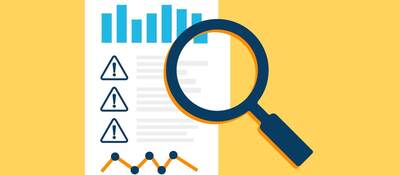May 28, 2024
By Tess Forton and Amrutha Kumaran
Traditionally used by cultural anthropologists, ethnographic research fosters relationships with potential users and their communities to gain a comprehensive knowledge of how services and technologies are embedded in their lives. This article explores how the rich data uncovered by ethnographic research can augment human factors (HF) activities during medical device development.
What is ethnographic research?
Ethnographic research is a qualitative research method that cultural anthropologists employ to develop relationships with and comprehensive knowledge of their research subjects. Ethnographic research of diabetes management in a foreign country, for example, would take a hands-on approach to understanding the lived experiences of patients with diabetes, their caregivers and healthcare professionals in that country. The ethnographer researching this topic typically engages in participatory research by shadowing users across various environments, such as their home, workplace, pharmacy and doctor’s office. In these environments, the ethnographer might observe how users’ interactions with their family, community and care network impact their diabetes management journeys. Through doing so, the ethnographer can gain valuable insights about the influence of environmental conditions, sociocultural norms and personal beliefs on users’ health-seeking behaviors associated with diabetes in that country. Some ethnographic data collection activities might include:
-
Shadowing/observing users as they perform routine activities
-
Touring user environments
-
Role-playing as the user
-
Conducting formal one-on-one interviews
-
Informal conversations
How ethnographic research can add value to HF analyses
Understanding users’ motivations, expectations and pain points is key to developing evidence-based solutions that turn into commercially viable products or services. Ethnographic research is already highly regarded for early user research, such as when a company is exploring new product concepts or future business opportunities. However, the strategic use of ethnographic methods can also augment later-stage product development activities and, particularly in healthcare, the required human factors analyses for regulatory submission. Here are some examples:
-
Consulting post-market surveillance databases and clinician experts are some of the best practices for building task and risk analyses. This might not be as fruitful if there is little precedence for a technology or device. In such cases, examining users’ actual versus intended workflows could be helpful for building robust task and risk analyses.
Example: A manufacturer is developing a highly specialized diagnostic software for use in hospital inpatient units and is uncertain how it might integrate into existing workflows. The manufacturer might conduct site visits and interviews to understand how hospital staff generally interact with and share information from other diagnostic tools and how outputs from this new software would inform care decisions. From there they can begin to create a workflow for their diagnostic software.
-
Users are unlikely to use products in an ideal use environment. Understanding the context of actual product use can help with identifying risks and designing effective mitigations against them.
Example: A busy hospital laboratory is likely to have several in-vitro diagnostic systems running samples in parallel, and laboratory staff might need to stop working on a particular task to attend to an urgent sample request. In turn, a manufacturer can incorporate design features to enable users to seamlessly pause and return to tasks in these situations, such as a clear indication of where they are in a process and what the next steps are.
-
Observing users in their actual use environments can identify unmet needs and challenges that users might not articulate in a formal interview setting or simulated use scenario. Applying learnings to subsequent iterations of a product or service can eliminate pain points and increase treatment adherence.
Example: A manufacturer seeking to better understand critical care nurse workflows and pain points conducts interviews with several nurses followed by site visits to critical care units. During these site visits, the manufacturer identifies a glaring inefficiency that never came up during the interviews. Through speaking with nurses at the site visits, they realize nurses consider this inefficiency the status quo – a normal part of their work they must power through rather than a fixable challenge – and therefore interview participants who never thought to mention this as a pain point.
-
Re-evaluating and adjusting a product’s design might be necessary prior to releasing it in a new market. Differences in culture and language or the division of responsibilities among healthcare providers might lead to marked differences in product usage. Ethnographic research can help to delineate these differences and guide the design of further product iterations or confirm that the product as-is works well across certain markets.
Example: Certain cultures and demographic groups tend to openly express their pain, while others value stoicism and suppressing pain. A manufacturer developing a pain management product that relies on patients self-reporting pain intensity might need to include more nuanced questions about the patient’s medical history and symptomology to indirectly assess pain intensity rather than relying on a pain rating scale.
Tips for success
-
Have a clear objective. Once you have consulted with stakeholders to articulate clear goals for your research, you can devise a research plan that will achieve your goals within your timeline and budget.
-
Prioritize quality over quantity. A smaller representative sample who are willing to share their lives and experiences can provide a wealth of detailed information. Engaging with several people in less depth will likely fall short of providing a comprehensive picture of patients’ lived experiences.
-
Be willing to adapt. Ethnographic research often reveals unexpected insights that could have substantial implications on product development. Having a defined research plan should not prevent you from modifying your focus as new information emerges.
By immersing in a user’s environment and lived experience through ethnographic research, manufacturers can uncover nuanced needs and cultural considerations that might otherwise be difficult or impossible to identify, enabling them to develop safer, more intuitive medical devices that truly align with users’ expectations.
Contact our team to learn more about how you can incorporate ethnographic research into your medical device’s human factors plan.
Tess Forton is a Managing User Researcher and Amrutha Kumaran is a Human Factors Specialist at Emergo by UL.
Request more information from our specialists
Thanks for your interest in our products and services. Let's collect some information so we can connect you with the right person.







